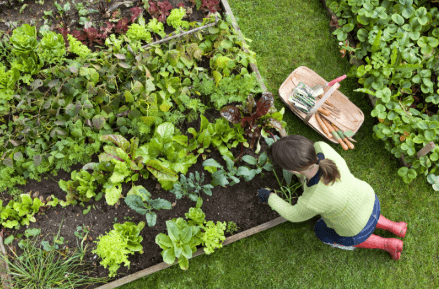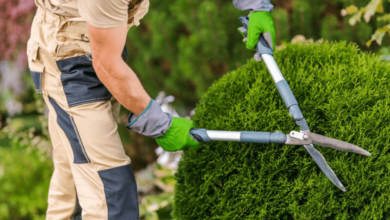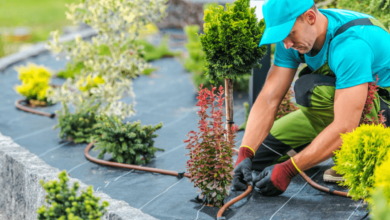6 Easy Vegetables to Grow for First-Time Gardeners

Gardening is a great way to explore something new, especially for beginners. It’s amazing to grow your own veggies at home. Starting with simple ones can really boost your confidence and open the door to more gardening fun.
Once you see how easy and fun it is, you’ll want to keep trying new things and experimenting with your garden.
Radishes
Starting your gardening journey with radishes is both fun and easy. These colourful veggies grow super fast and you can usually pick them in just a few weeks.
They’re small, so they’re perfect if you’ve got a tiny spot, like a pot or a small garden patch. Plus, they don’t need much attention, which is great if you’re just starting out in gardening.
Harvesting and Flavor
Radishes taste best when they’re about the size of a marble or an inch wide. That’s when they’re nice and crunchy with that spicy kick. If you leave them too long, they might get a bit tough, so it’s good to check on them often.
Radishes are also pretty tough against pests, which means you won’t need to use any chemicals, keeping your gardening eco-friendly. This makes them a top pick for anyone new to gardening who wants a simple and green way to start.
Lettuce
Lettuce is a great veggie to grow if you’re just starting out with gardening. It’s super easy and doesn’t need much fuss. You can grow it in a garden bed or just in pots on your patio.
Mix it up with different types like Romaine, Butterhead, or Oakleaf—they not only look good but taste great too. Plus, they make your salads and sandwiches way more interesting.
Lettuce loves cooler weather, so it’s perfect for spring and autumn. This means you can keep your garden going for longer.
The best part? You can pick lettuce leaves multiple times. Just snip the outer leaves, and the plant keeps growing. It’s like having a never-ending supply of fresh greens.
If you’re new to this, pop by a local garden centre for tips and good seeds. They’ll help you pick the best lettuce for your area, so you’ll have a great gardening experience. With just a bit of effort, you’ll have fresh, home-grown lettuce for every meal.
Carrots
Carrots are a great pick for your garden because they grow underground, which is pretty cool. Both kids and grown-ups love watching the green tops, knowing there are colorful carrots hiding underneath.
Planting them is super easy: just pop the seeds into loose soil that drains well, keeping them about 3 inches apart in rows 12 inches apart. As they start to sprout, make sure to thin them out so they have enough room to grow without fighting for nutrients.
Variety and Color
Carrots come in loads of different types and colors, from the usual orange to bright purple and even white. Each one has its own taste and brings some serious color to your garden and meals.
Trying out different kinds is fun and might help you find some new faves. Plus, carrots store really well, so you can enjoy them all year round. With a bit of care and patience, you’ll get to munch on the sweet, crunchy goodness of home-grown carrots.
And if you ever need extra guidance or a bit of help setting up your garden beds, you can always reach out to a gardening service for advice and support.
Zucchini
Zucchini’s a favourite for many gardeners ’cause it’s easy to grow and gives loads of veggies. Whether you’ve got a big garden or just a sunny spot on your balcony, zucchini can thrive with little work. It’s perfect for beginners who want to up their gardening game without too much fuss.
Green Beans
Green beans are a top pick for beginner gardeners ’cause they’re easy to grow and taste amazing. They grow upwards, so they don’t take up much space and look cool in your garden too.
Picture this: vibrant green tendrils winding their way up a trellis, creating a living wall of green. It’s like nature’s own art installation. I remember my first attempt at gardening; I was thrilled to see those little shoots reaching for the sky, turning my humble patch into a mini Eden.
Planting and Support
To get the best green beans, wait until the frost’s gone before planting. You know, those chilly mornings when you can see your breath? Once they’ve passed, it’s time to sow.
Pop the seeds straight into the ground, about 1–2 cm deep, and keep them 3 inches apart. It’s like giving each seed its own little room to grow. Once they start sprouting, you’ll want to help them climb.
You can use old broom handles or bamboo stakes as supports. Just position them so the beans can latch on and reach for the sun—full sun, mind you, as they love to bask in it.
A quick tip: leave enough space between rows so you can wander through without trampling your handiwork. This not only makes picking a doddle but also helps with keeping pests at bay.
Soil Benefits
Green beans don’t just taste good; they’re great for your garden soil too. They’re part of the legume family, which means they’re like little nitrogen machines. In simpler terms, they take nitrogen from the air and pop it into the soil, making it richer.
Picture this: once you’ve harvested your delicious beans, plant some tomatoes in their place. They’ll thrive on the nitrogen boost, growing plumper and juicier.
And here’s a nifty after-harvest trick: cut back the vines and leave the roots in the soil. They’ll keep releasing goodness even after the beans are gone.
Growing green beans is a smart way to keep your soil healthy and enjoy fresh veggies from your own garden.
Your beans will be the talk of the garden party, and you’ll have a delightful story of your own green-thumb journey to share. So, give it a go this spring and share your harvest with us!
Herbs
Herbs like basil and parsley are super easy to grow and add loads of flavour to your meals. They fit right into a kitchen garden, especially if you live in the city with not much space.
You can grow them in little pots or even on your windowsill, so they’re always close by and easy to look after.
Perfect for city living! Imagine having a fresh supply of basil ready to sprinkle over your homemade pizza. And speaking of basil, did you know a healthy plant can produce up to 20 leaves a month? That’s plenty for your culinary adventures.
Growing Tips
To keep your herbs growing strong and bushy, try picking them regularly. Just pinch off the top leaves, and it’ll help the plant branch out more instead of just growing seeds.
This trick not only boosts how much you get but makes them taste even better, giving you fresh stuff for cooking all season. Herbs love the sun, so give them plenty of light to keep them happy and healthy.
A small pot, about 15cm in diameter, is usually a good size for one plant. Make sure to water them when the soil feels dry to the touch, but don’t drown them—nobody likes soggy roots! As for pruning, a quick snip every couple of weeks should do the trick.
If you’re short on space but want some greenery, herbs are a great choice. With just a bit of effort, you can turn a windowsill into a little garden, always ready with fresh ingredients for your cooking and garnishes.
You might try adding a few fresh leaves to your Sunday roast gravy or perhaps tossing some parsley into a classic fish pie. It’s amazing how a bit of green can elevate a dish. Give it a go and let us know how your herbs turn out!
Conclusion
Starting a garden with easy veggies like radishes, lettuce, carrots, zucchini, green beans, and herbs is really rewarding.
You get fresh, home-grown food and feel closer to nature. It’s a great way for beginners to build confidence. So give gardening a go and enjoy the fruits of your labour!


